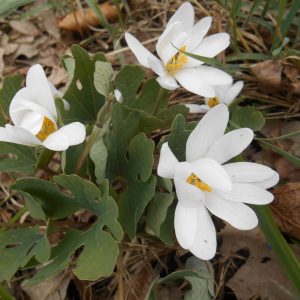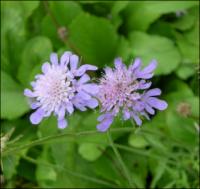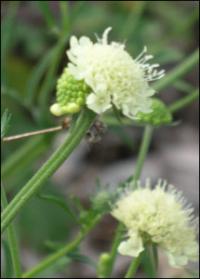Plants for Butterflies and Other Pollinators
Showing 161–168 of 211 results
-
Sanguinaria canadensis Bloodroot, Indian paint, Red Puccoon Z 3-9
Elegant, swan-white anemone-like blooms showcase bright yellow stamens in spring emerging from the center of glaucus,lobed, puckered, rolled leaves. Both the leaves and root contain a red sap. (Bloodroot). Ephemeral, dies back in summer.
Available for purchase in Spring only
Elegant, swan-white anemone-like blooms showcase bright yellow stamens in spring emerging from the center of glaucus,lobed, puckered, rolled leaves. Both the leaves and root contain a red sap. (Bloodroot). Ephemeral, dies back in summer.
Size: 6” x 12”
Care: part shade to shade in moist well-drained soil
Native: Nova Scotia to Manitoba, south to Florida and Arkansas, Wisconsin native
Wildlife Value: deer resistant. Pollen, but no nectar, makes this attractive to many different bees. Ants distribute the seeds.Sanguinaria is Latin meaning “blood,” so named for the red color of the sap. Natives used sap to make dye for skin, clothing, weapons, and baskets. Used to induce abortions, as well as an aphrodisiac and to cure sexually transmitted disease. The root rubbed on the palm of the hand was a love charm for Ponca men. Iroquois prescribed it for diarrhea and constipation, to draw out slivers, hiccups, and generally as a panacea. It was administered to those who saw a corpse. Sioux used a weak solution to cure fever, rheumatism, congestion, and skin cancer Ojibwa made dried roots into a necklace to prevent bleeding. Collected by Rev. John Banister in colonial Virginia c. 1678. According to Pennsylvania nurseryman John Bartram(1699-1776) this was “…(C)alled by the Country People, Red Root, or Tumerick The Root dried and powdered is recommenced by Dr. Colden, as a Cure for jaundice, the Powder has been given to the Weight of a Drachm in Small Beer; and by others, for the Bite of a Rattle Snake.” Grown at Shadwell, Jefferson’s birthplace and home until it burned in 1770. Grown at America’s 1st botanic garden, Elgin Botanic Garden 1811, located where Rockefeller Center now stands. Pressed specimen in Emily Dickinson’s herbarium.
-
Sanguisorba hakusanensis Korean burnet, Lilac squirrel Z 4 – 9
In mid to late summer bushy purplish-pink tails (like a Barbie doll squirrel tail) nod gracefully downward atop erect stems emerged from a clumping base that sprouts sage-colored, scalloped leaves.
OUT OF STOCK
In mid to late summer bushy purplish-pink tails (like a Barbie doll squirrel tail) nod gracefully downward atop erect stems emerged from a clumping base that sprouts sage-colored, scalloped leaves.
Size: 12-18”x12”
Care: sun to part shade in moist to moist well-drained soil
Native: Korea and JapanSanguisorba is Latin meaning to soak up blood, for the plant’s reputed ability to clot blood. Hakusanensis means coming from Haku, a mountain in Japan where this grows. Described in Botanical Magazine (Tokyo) in 1907.
-
Sanguisorba obtusa Japanese burnet Z 4-9
A confection - neon Barbie-doll pink dangling bottle-brush spikes- in July - August
OUT OF STOCK
A confection – neon Barbie-doll pink dangling bottle-brush spikes- in July – August
Size: 2-3’ x 2’
Care: moist to moist well-drained soil in sun
Native: Honschu Japan
Wildlife Value: attracts bees and butterflies, Deer resistantSanguisorba is Latin meaning “to soak up blood”, for the plant’s reputed ability to clot blood. This species collected before 1873.
-
Sanguisorba parviflora syn S tenuifolia var. parviflora, S. tenuifolia var. alba White Japanese burnet Z 4-8
Drooping white spikes (I know, drooping and spike are an oxymoron but you get the idea) atop tall stems and above narrow, dissected foliage as beautiful as the flowers. Blooming in July into September.
Drooping white spikes (I know, drooping and spike are an oxymoron but you get the idea) atop tall stems and above narrow, dissected foliage as beautiful as the flowers. Blooming in July into September.
Size: 3-5' x 18"
Care: Sun to part shade in moist well-drained soil
Native: Japan, Korea, Russia
Wildlife Value: attracts bees and butterflies, Deer resistant.Collected by 1874. (Maxim.)
-
Scabiosa lucida Pincushion flower Z 4-9
Lilac pincushions all summer & fall
OUT OF STOCK
Lilac pincushions all summer & fall, non-stop
Size: 24" x 12"
Care: full sun in well-drained soil.
Native: Central and Eastern Europe
Wildlife Value: attracts butterfliesScabiosa from Latin scabies referring to the itch caused by a mite infestation, which another Scabiosa species allegedly cured. This species 1st described in a French publication in 1779.
-
Scabiosa ochroleuca Cream pincushion Z 4-9
Looking for a non-stop bloomer? Cream petals compacted together bloom atop tall, wiry stems from June to October
Looking for a non-stop bloomer? Cream petals compacted together bloom atop tall, wiry stems from June to October
Size: 18"-24" x 18"
Care: sun to part shade in moist well-drained soil. Drought tolerant.
Native: Europe & Asia
Wildlife Value: attracts butterfliesThe name scabiosa from Latin scabies refers to the mite infestation that this plant was supposed to cure; ochroleuca means “yellowish white.” First described by Swiss botanist Bauhin Caspar (1560-1642) in Pinax theatri botanici in 1623.
-
Schizachyrium scoparium syn. Andropogon scoparium Little bluestem Z 3-9
Wispy, feather-like seedheads atop blue-grey foliage that turns plum-orange-red in fall.
Wispy, feather-like seedheads atop blue-grey foliage that turns plum-orange-red in fall
Size: 18" x 12"
Care: sun in well-drained soil.
Native: all No. America, Wisconsin native.
Wildlife Value: leaves are food for Skipper butterfly caterpillars and seeds food for songbirdsComanche used it to remedy syphilitic sores. Lakota made soft, wispy seedheads into liners for moccasins. Collected by French plant hunter André Michaux (1746-1802) in America’s prairies c. 1790
-
Scrophularia macrantha syn. Scrophularia coccinea Redbirds in a Tree, Mimbres figwort Z 5-10
This sub-shrub blooms from early summer until frost with white-lipped cherry-red, tubular flowers that look like a flock of inch-long, baby birds with open mouths waiting for food, each topping short stems along the branches. The margins of its oval green leaves are toothed.
OUT OF STOCK – EMAIL FOR AVAILABILITY
This sub-shrub blooms from early summer until frost with white-lipped cherry-red, tubular flowers that look like a flock of inch-long, baby birds with open mouths waiting for food, each topping short stems along the branches. The margins of its oval green leaves are toothed.
Size: 2-4’ x 18”
Care: sun to part shade in well-drained to moist well-drained soil. Little to no fertilizer.
Native: Three mountain tops in southern New Mexico (high elevations make it hardy to cold regions)
Wildlife Value: Its nectar is one of the best feeders and attractors for hummingbirds. Pollen and nectar also attract butterflies and bees.
Awards: 2008 Plant Select WinnerFirst collected on the Mexican Boundary Expedition by Charles Wright (1811-1885) and John Bigelow (1804-1878), “at the base of a rocky ledge near the summit of a mountain . . .a truly handsome species.” Described by Asa Gray, Torrey, John ed. Report on the United States and Mexican boundary survey Vol. 2 p. 111 (1859)






